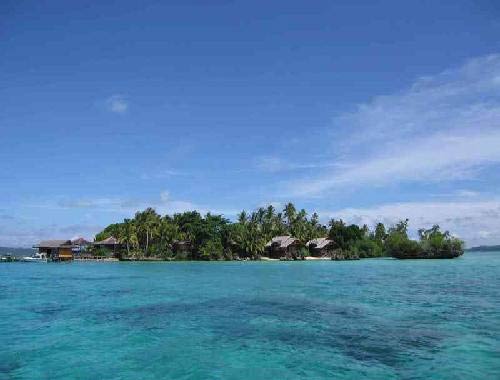Dive in Kalimantan
Diving in Kalimantan

In the eastern part of Kalimantan, the Indonesian part of Borneo and about 45 km from the Berau river estuary out in the Makassar strait lie several reefs ideal for scuba diving.
The dive sites are famous for the large gatherings of manta rays and a jellyfish lake. But in the reefs in the Berau archipelago also live a lot of very interesting critters, beautiful nudibranchs, hidden crabs and shrimps and unusual fish such as ghostpipefishes, scorpionfishes and more. There are several dive resorts, all are relatively easily reached from either Balikpapan or Tanjung Redeb.
Visibility here can be as low as 3m and averages about 20m with a maximum of 30m, the low visibility is due to silt from the river in Tanjung Redeb. Samama or Derawan usually have the lowest visibility, Sangalaki a bit better because it is a little further offshore, and Kakaban and Maratua even better because they are even further out. Water temperature is about 28°C year round.
Travel to Kalimantan

Borneo is the third largest island in the world and is located at the centre of Maritime Southeast Asia. Administratively, this island is divided between Indonesia, Malaysia and Brunei. Indonesia's region of Borneo is called Kalimantan, while Malaysia's region of Borneo is called East Malaysia or Malaysian Borneo.
Borneo/Kalimantan is the huge adventure travel destination. It is one the world’s third largest island covering the area of 747,000 square kilometer and covered by one of the world’s largest stretches of tropical rain forest through which flows tremendous mighty rivers which are the island’s highway.
Borneo, of which Indonesian Kalimantan covers two-thirds, is a single, vast-ecosystem in which the thick, exuberant forest that covers the world's third largest island acts as an enormous sponge.
Formed over millions of years, the rainforest of Kalimantan is almost completely self-sustaining, requiring little more than water from the skies to survive. The soil on which the forest grows is thin and poor, and rather than drawing nutrients from the ground, it feeds on its own debris, recycling the nutrients contained in the rotting compost on the floor. Trees soar upwards, reaching a height of seventy meters or more, providing support for vines, creepers and orchids, and creating a dense canopy of leaves that protects the layer of humus from being washed away by the fierce tropical storms. While the thick cover of the forest blocks direct sunlight, rotting leaves and root mass store water from the rains, releasing it gradually during the dry season. Thus, the forest also creates and maintains the dark, warm, dank environment essential for its own continuous growth and that of the life within it.
Given the luscious nature of Borneo/Kalimantan, one could not expect less of its waters. Borneo is doted of a surrounding nature out of the ordinary. The best places to enjoy scuba diving in Kalimantan are Sangalaki, Kakaban, Samama, Maratua, Nabucco, and Derawan.

